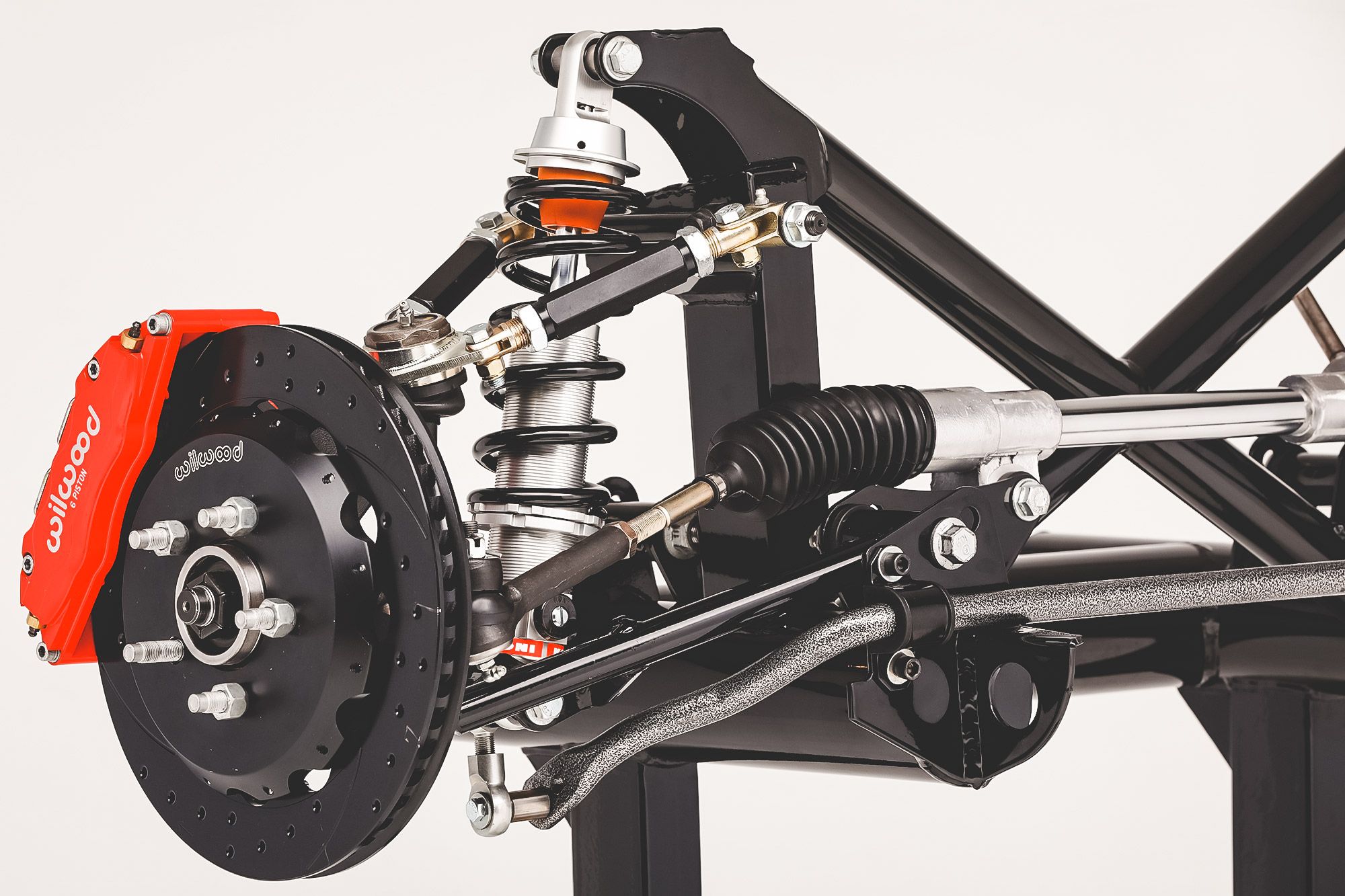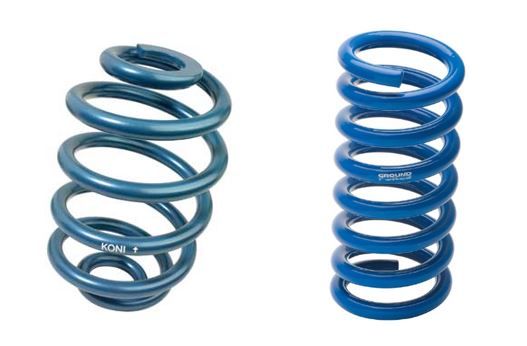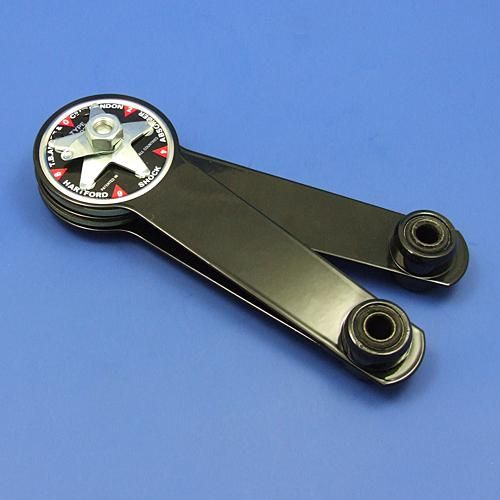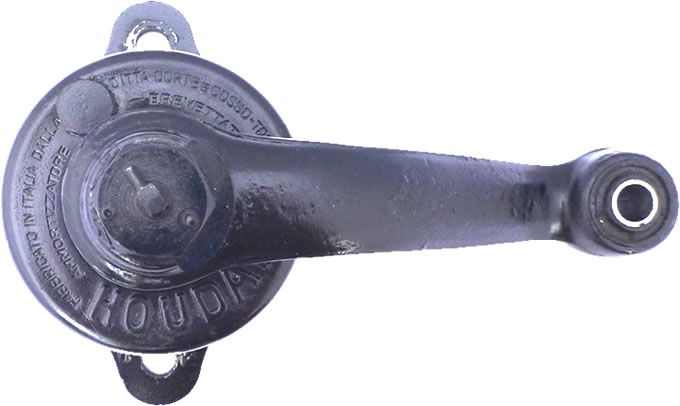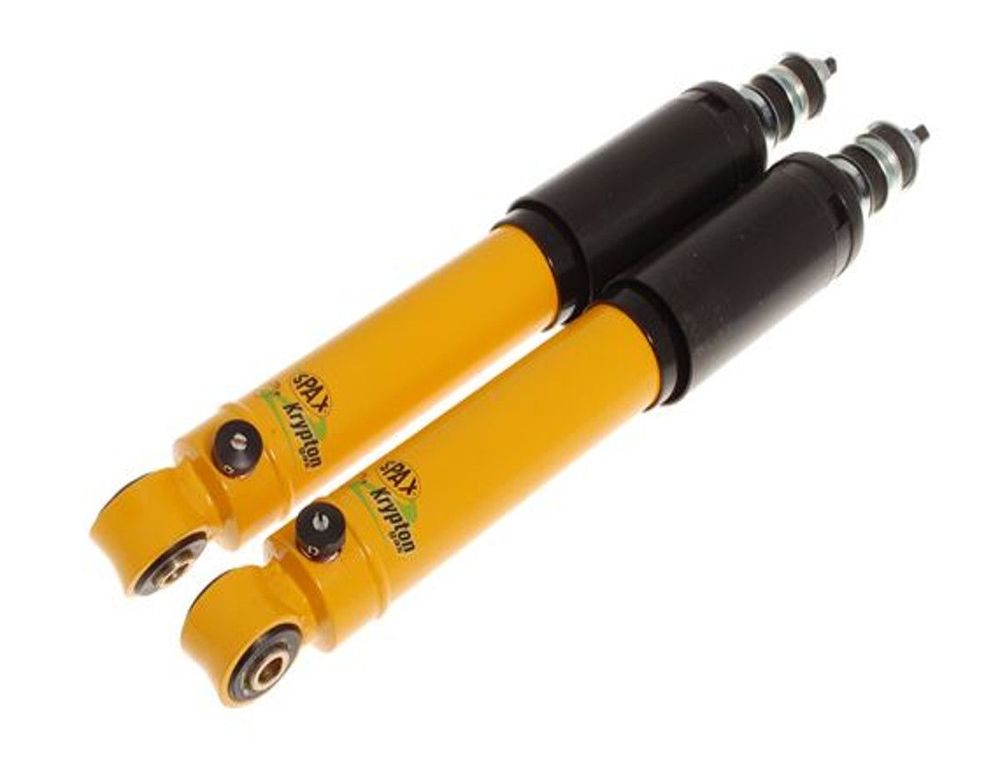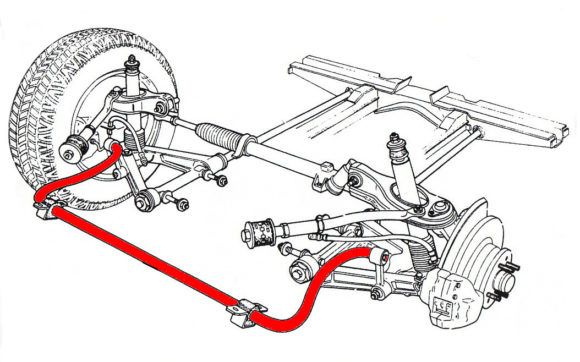Suspension systems
The suspension system was born even before the advent of the automobile with the aim of making the vehicle more comfortable and safe for passengers, due to the poor quality of the roads at the time.
It is a system that has the function of absorbing, through the wheels, the impacts caused by irregularities in the floor, providing comfort to the vehicle's occupants and ensuring contact with the ground. It compensates for road imperfections and provides greater stability, whether cornering, accelerating or braking, making it easier for the driver to control the vehicle.
Initially, leaf spring suspensions (semi-elliptic) were used for both axles of the vehicle, due to simplicity and low production cost. Later, this type of suspension began to be used only on the rear axles of vehicles, and the application of coil springs on the front axles became widespread.
Subsequently, the suspension was modified, adopting independent systems. Thus, each wheel began to follow the irregularities of the road without affecting the behavior of the other wheel on the same axle, maintaining the stability of the body.
The fundamental components of the suspension are the shock absorbers and springs.
The function of the shock absorber is to control body movements and soften the oscillations produced by the springs, directly influencing the vehicle's stability.
When they are worn out, they no longer perform their function and become inactive, which leads to premature wear of the remaining suspension components.
At high speeds or when cornering, shock absorbers exert a very important control on the stability and safety of the vehicle. Therefore, you must pay attention to its condition and the mileage limit established by the manufacturer for a possible replacement, in order to avoid accidents.
It is easy to check when a shock absorber is not in good condition: The body oscillates more than normal when braking and cornering and the vehicle “runs away” during braking.
There is also the possibility of a visual check, analyzing whether there are oil leaks between the axle and the shock absorber body and/or whether tires are showing abnormal wear (rapid and/or irregular). If you encounter one of these situations, have no doubt: it is time to replace the shock absorbers.
Currently the suspension system is the focus of continuous development. As mentioned, the need to improve safety, comfort and performance is what drives the technological development of suspensions, such as active suspensions, which control the vertical movements of the wheels using electronics.
MAIN COMPONENTS OF SUSPENSION SYSTEMS
For a better understanding of the functioning of the various types of suspension systems, it is extremely important to approach the main components as well as their characteristics, always focusing on studying the vehicle's dynamics.
The springs (main and auxiliary or stopper), the shock absorber and the bushes constitute the main components of a suspension, being used in the vast majority of current systems.
Semi-elliptical spring
The semi-elliptical spring or conventional leaf spring is made up of several overlapping leaves.
The great advantages of these springs are their simplicity of construction, robustness and low cost. There is a characteristic of this type of spring that must be mentioned, which is the internal friction generated by slipping between the blades.
A recently implemented way to reduce internal friction between blades was the introduction of friction reducing pads at the points where there is contact between them.
Helical Springs
This type of spring is manufactured by winding a wire in a helical shape. When a high level of comfort is desired, this type of spring is the most used.
Figure — Helical Springs
The characteristic stiffness curve of a spring is linear and obeys the equation:
F=KX (Hooke's Law)
Where:
F — Load on the spring [N];
K — Spring elastic constant [N/m];
X — Spring deformation [m].
In the figure, the spring on the left is called a Barrel-type helical spring (Mini-block). These springs have a progressive stiffness curve (non-linear) and differ from the standard helical spring (on the right in the figure) due to their “barrel” shape. This shape causes a lower spring locking height, that is, the height at which all links of a helical spring touch.
In addition to progressive stiffness, a great advantage of this type of spring is the fact that it requires less space for its installation (height), compared to cylindrical springs, for the same total available travel.
Pneumatic Spring
In relation to all the various types of springs that have already been mentioned, the pneumatic spring is the type that offers the best dynamic characteristics under varying load conditions.
This spring, when associated with a suspension height control system, maintains dynamic characteristics close to ideal under any loading condition. For situations where there is a large variation in load between the empty and loaded vehicle combined with the need to keep the vehicle height constant and also where comfort is important, the pneumatic spring is the best option to choose, however it is a system more complex, more prone to damage and requires more maintenance.
Shock absorber
The connecting elements between the suspended and unsprung mass of vehicles are shock absorbers. Their function is to reduce and limit the speed and amplitude of body movements in all its degrees of freedom. Due to the need for the vehicle to obey the excitement caused by irregularities in the pavement, shock absorbers play an important role in restricting excessive and unwanted movements.
Therefore, the vehicle can be analyzed as a vibrating system with various masses and springs, which can compromise stability or cause a feeling of discomfort and insecurity for the driver and passengers.
All the energy that the shock absorber absorbs due to the vehicle's oscillations will be released into the environment in the form of heat.
As for the division of shock absorbers, they can be of two types, dry friction with solid elements and hydraulic with fluid elements. In relation to dry friction with solid elements, two types can be mentioned, with sliding discs (Truffault-Hartford) and with a rolled belt (Gabriel Snubber).
With regard to hydraulic shock absorbers with fluid elements, two types can be mentioned, the lever shock absorber (Houdaille) and the telescopic shock absorber.
Telescopic shock absorber
The types of shock absorbers most used today are double-tube or single-tube telescopic hydraulics represented in the figure in this order.
The pressure of the gas injected into the pressurized shock absorbers normally varies between 0.4 and 0.5 MPa, and temperatures of up to 200 °C can be reached.
It is possible by stroke-dependent damping with the help of control cavities. These are formed into the pressure tube of the double tube shock absorbers, thus promoting a passage of hydraulic fluid that depends on the relative position of the rod and the pressure tube. Due to this effect, the force, which is a function of the drive speed, also becomes a function of the stroke or position of the rod.
These cavities will allow the passage of hydraulic fluid, which reduces the hydraulic resistance offered to the movement of the shock absorber rod, modifying the damping curve (force x speed relationship). The cavities are located so that there is a smooth passage in the damping curve.
The change in the damping characteristic depending on the position of the damper rod or piston and the configuration of the cavities depends on the purpose or application of the damper. It can have different cavity configurations, as shown in the figure below.
Configuration "A" promotes a reduction in the hydraulic resistance offered to the piston displacement in a large part of the stroke of the central region of the shock absorber.
Configuration "B" also promotes a reduction in the hydraulic resistance offered to the piston's displacement, but only in a small stroke around the central region.
With configuration "C", only at the end of the suspension travel is there the action of a "hydraulic brake", thus preventing impacts, especially when the shock absorber is fully opened.
The "D" configuration promotes an increase in the hydraulic resistance offered to the displacement of the piston in a small stroke around the central region and also at the ends (end of stroke) of the shock absorber.
stabilizer bar
There are components that can be added to the suspensions, both front and rear, with a view mainly to reducing the body's inclination angles and also the speed at which the phenomenon occurs. These are called stabilizer bars and can be made from circular bars of solid or tubular steel, or "U" shaped profiles.
The stabilizer bar has other characteristics in addition to those already mentioned, such as influencing the behavior characteristics in curves and responses when turning the steering wheel, causing the vehicle to increase or decrease oversteer and understeer, improving vehicle safety and control. Therefore, the use of the bar on the front axle increases the tendency to understeer and improves behavior when changing direction. As a result, greater stabilization of the rear axle leads to more neutral behavior in front-wheel drive vehicles and greater oversteer in rear-wheel drive vehicles.
The figure shows a front suspension with a stabilizer bar, where the bar is fixed to the swinging arms and supported by bushings attached to the body.
Its stabilizing effect depends on the rigidity characteristics, defined through its geometry, dimensions and materials used.
That being said, when using the stabilizer bar to improve the vehicle's behavior, it may also cause some undesirable effects, such as increased suspension stiffness and vibration due to the increased rigidity of the assembly, thus causing a decrease in comfort. . Another situation that can occur is increased body oscillation when the vehicle drives on roads with uneven pavement.
TYPES OF SUSPENSION
To study vehicle dynamics, in-depth knowledge of suspension systems and their components is necessary.
Responsible for damping and controlling the car's balance, suspensions play a determining role in the car's behavior. Some are more elaborate than others, more aimed at comfort or performance. Let's try to understand what distinguishes them.
The various types of existing suspension systems are presented below.
RIGID AXLES
This system was the first to be developed and began to be used in carriages, using semi-elliptical or leaf springs. The great advantage of this type of suspension is its simplicity of construction, high robustness and low production cost.
The use of this system in passenger vehicles lasted until around the 1960s, and today it is still used on the rear axle, normally in commercial vehicles.
In this type of suspension, the left and right wheels are connected by a single axle. Thus, movement on one side affects the other. The axles and their supports are heavy, increasing the suspended mass of the car.
As shown in the figure below, a pair of semi-elliptical springs are mounted longitudinally on a rigid shaft.
With the arrival of helical springs with separate shock absorbers, new doors were opened for the development of innovative suspension systems, despite these being more expensive than systems with semi-elliptical springs.
INDEPENDENT SUSPENSIONS
The independent suspension allows the right and left wheels to move individually, which is excellent for dealing with road irregularities and potholes. In the case of a rear-wheel drive car, it also helps transmit power more effectively. The system is light, stable and offers a comfortable ride.
The big difference between rigid and independent axle suspensions is the fact that in the latter, the vertical movement of one wheel does not interfere with the movement of the opposite wheel on the same axle. Another advantage of independent suspensions is that they provide greater rolling stiffness in relation to vertical stiffness.
Trailing arm
The figure below shows one of the simplest and most economical independent front suspension systems, "trailing-arm", in which two springs were used, mounted transversely, subjected to torsion.
Double Triangle (Double wishbone)
Another type of suspension is double wishbone (Double-A-Arm). This was widely used in the front suspension of American vehicles.
A design that supports the wheels on an upper and lower arm together. The arms are usually shaped like a “V”, like a triangle. Depending on the shape of the arms and the traction of the car, you can control changes in the alignment and position of the car during acceleration with relative ease. It is also very rigid, making it a popular choice in sports cars looking for control and stability. However, it has a complex construction, with multiple components and takes up space.
MacPherson
Currently, the front suspension most used in small and medium-sized front-wheel drive passenger vehicles is MacPherson strut.
A simple suspension system consisting of a spring, a shock absorber and a low control arm. The column refers to the shock absorber itself, which also serves as support in this type of suspension. The upper part of the shock absorber supports the bodywork via a rubber support, and the lower part is supported by the triangle. As it has fewer parts, the weight is lower and, consequently, it has a good displacement. Vibration can be absorbed to a large extent.
Multilink
It is an advanced double wishbone system, which uses between three and five arms to maintain the axle position, instead of two arms. These are separated and there is a lot of freedom when it comes to positioning. The increased number of arms allows it to handle movement in many directions and keeps the wheels in contact with the road surface at all times. This type of suspension is often used in the rear suspension of high-performance front-wheel drive cars to maintain stability at high speeds, and in high-power rear-wheel drive cars to maintain traction.
In this way, we cover the most common suspension systems, which will certainly make it easier to identify which one is used in your vehicle.



